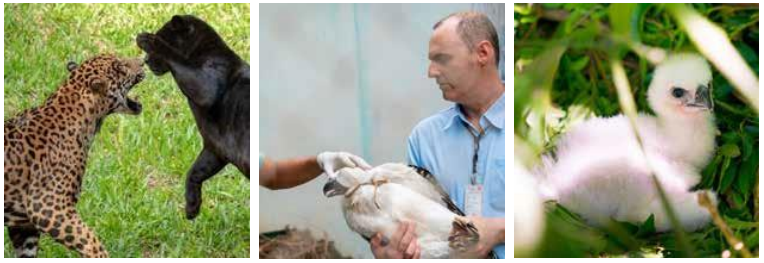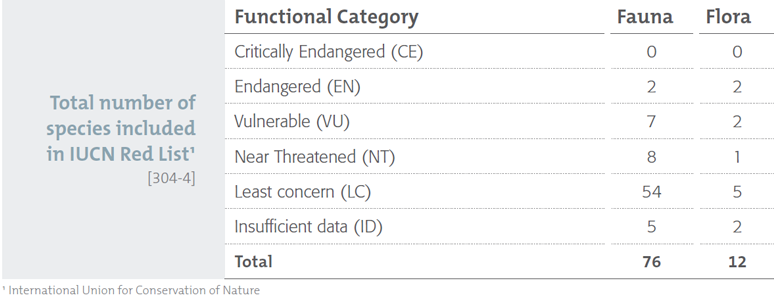[103-2, 304-1, 304-2, 304-3]
To protect and conserve the biodiversity of its area of influence, Itaipu develops the Biodiversity Program Our Patrimony, divided into three major actions: conservation and management of terrestrial diversity, monitoring of Ichthyofauna and conservation and recovery of protected areas in the Brazilian territory.
In August, the protected areas (refuges and protection range) of the company were classified as the core zone of the Atlantic Forest Biosphere Reserve (RBMA), a title granted in 2017 to the right bank and which is equivalent to the World Heritage Site. The label is from the “the Man and the Biosphere” (MaB) program of the United Nations Educational, Scientific and Cultural Organization (UNESCO).
In addition, the areas of BP3 were recognized as a decentralized management unit, a new category created by the RBMA management system. The company also received the label “Company Friend of the Atlantic Forest”, an honor given also to other five companies in 2018.
Lastly, the Bela Vista Biological Refuge (RBV) won the title of the RBMA outpost. The studies related to fauna occur, on the Brazilian side, in the wild animal breeding of Itaipu Binacional (CASIB), located in the RBV, which has reproduced more than 1,000 animals of 42 species, bringing survival index of the cubs higher than 70%.
Reproduction works have concentrated on endangered species in Brazil and those that are rare in the region, such as Harpy, Jaguar, tapir and small cats.
Other Achievements:
- One of the prominent initiatives undertaken in the RBV is the breeding program of harpies (endangered species). Considered one of the most successful in Brazil, it has a roster of 32 birds, of which 22 were born on site. The number represents 30% of the population of harpies living in captivity in the country. Itaipu is the only institution in the world that reproduces the species in a continuous manner;
- Planting of 10,500 seedlings and the beginning of the forest inventory in the Maracajú Biological Refuge, in order to evaluate the reforestation done and this-of the natural regeneration of the forest;
- Collection of 233 kilograms of seeds of native forest species, with emphasis on the seeds of palm tree (Euterpe edulis), endangered species, in a forest fragment near the Iguaçu National Park.
Total Number of Species Included in the IUCN Red List¹
[304-4]
Two species of fauna and two species of flora were classified as “at risk of extinction”. To see the complete table, visit the Itaipu website (www.itaipu.gov.br).


 Português
Português
 Español
Español
